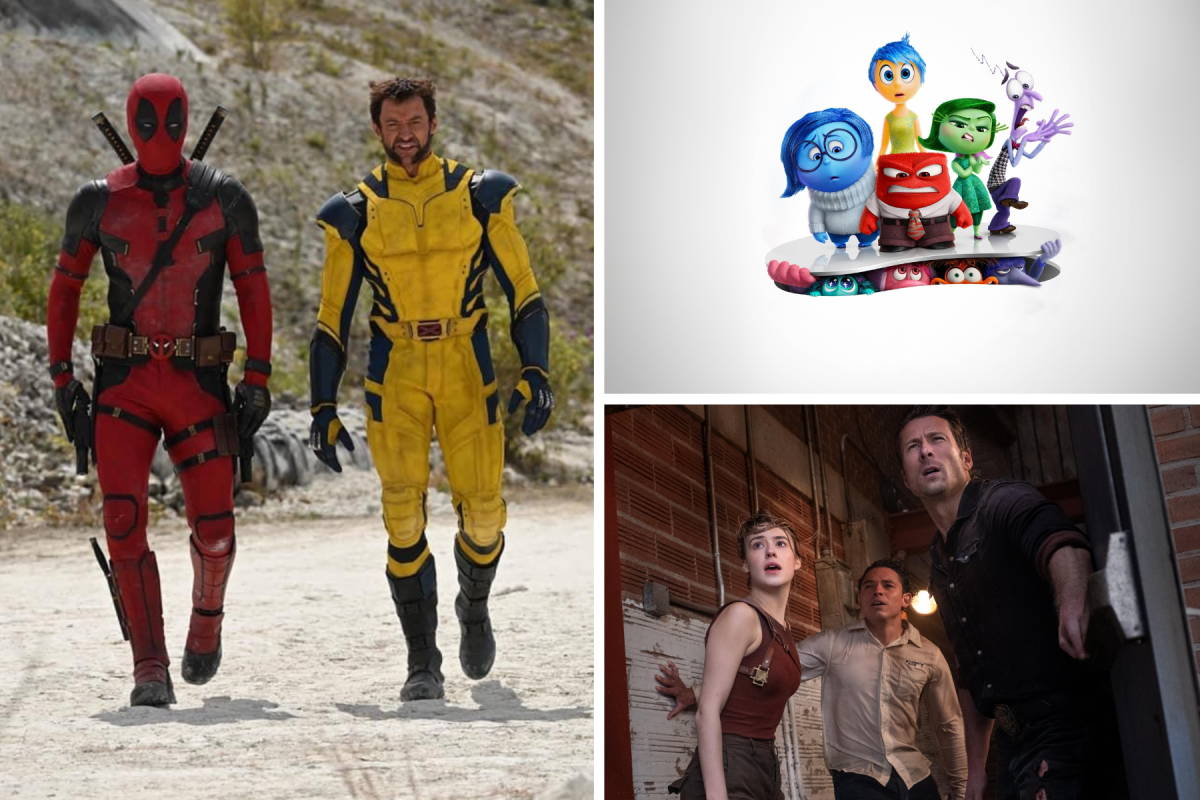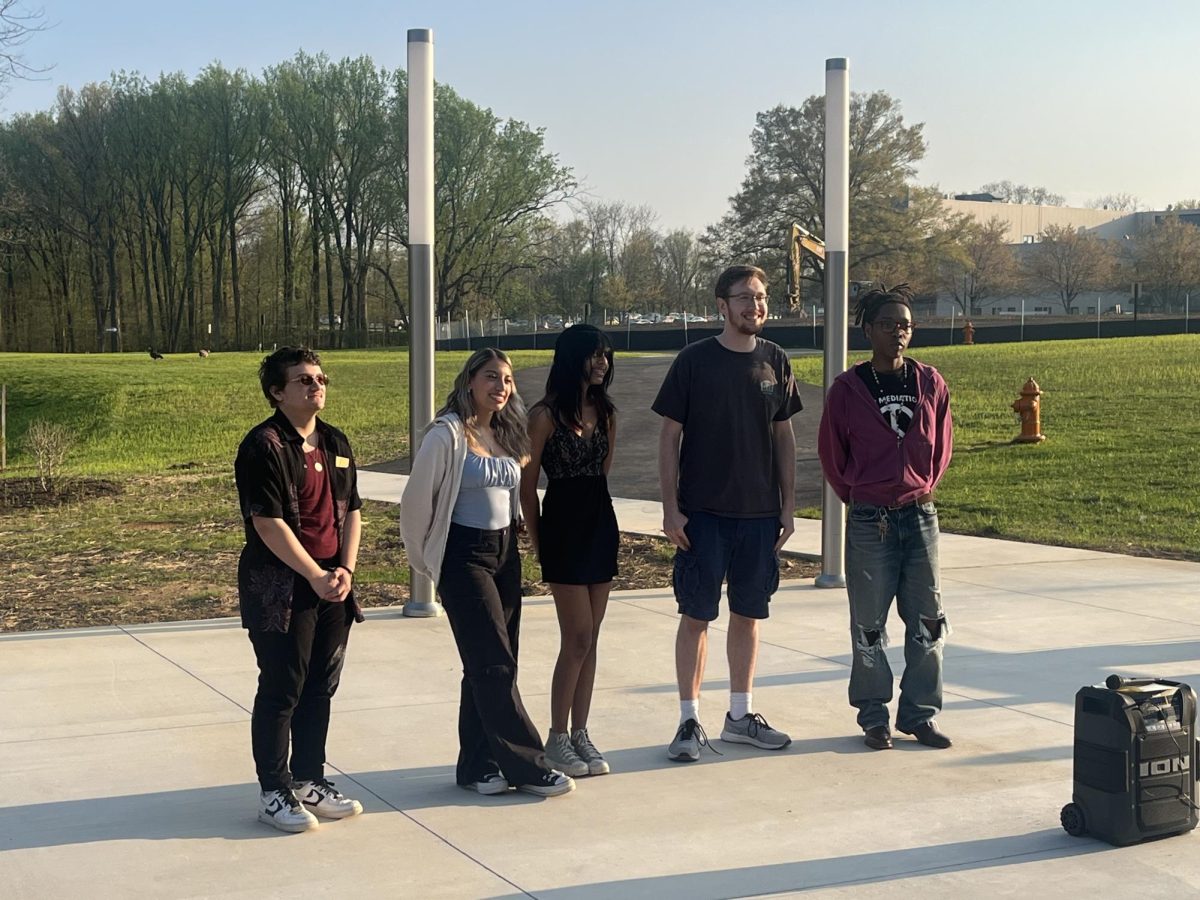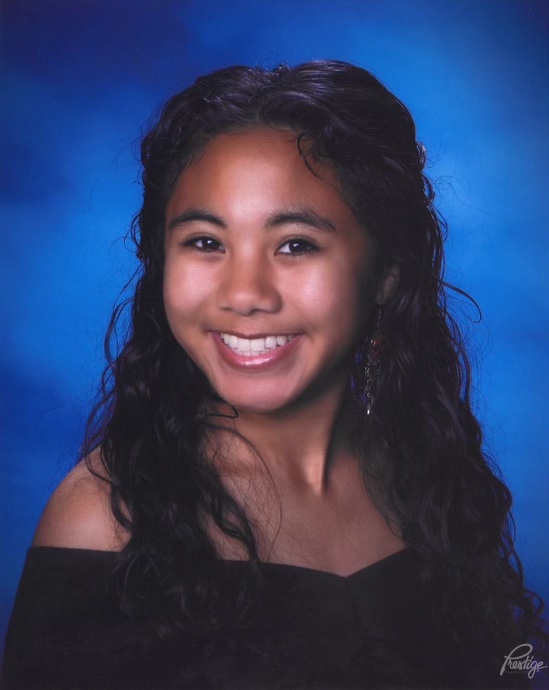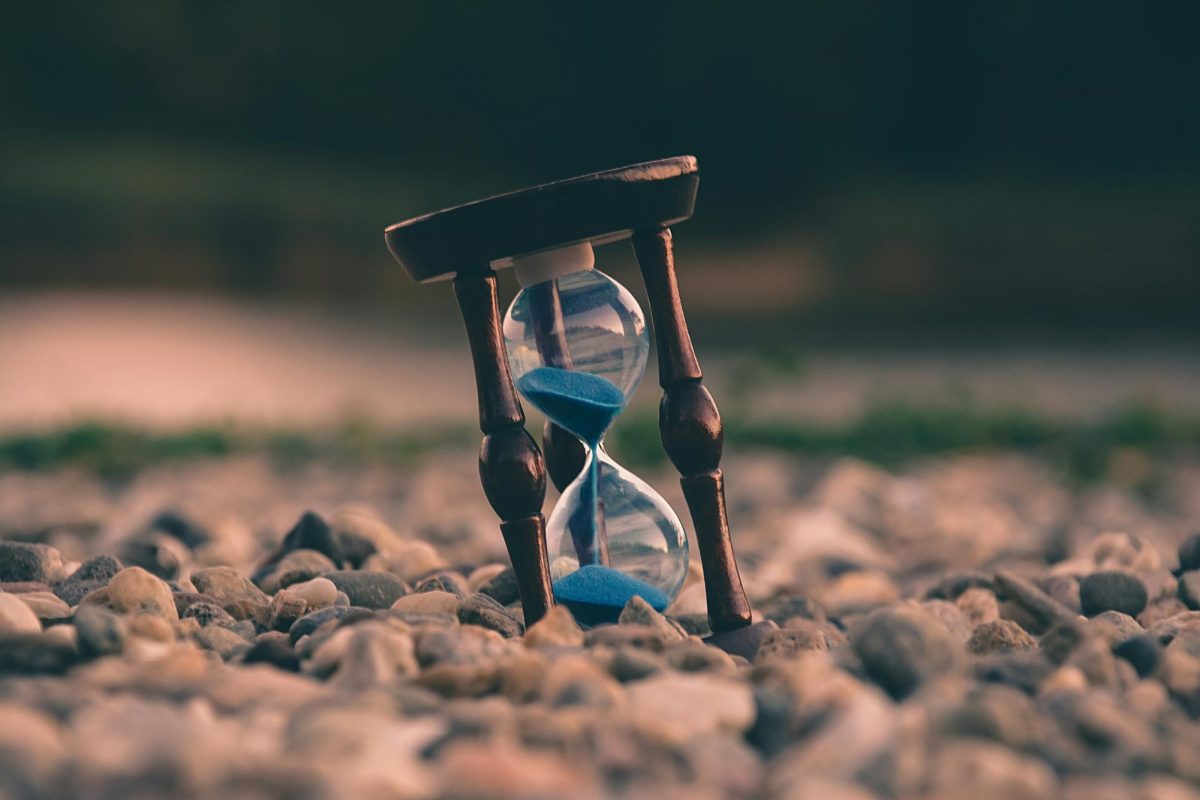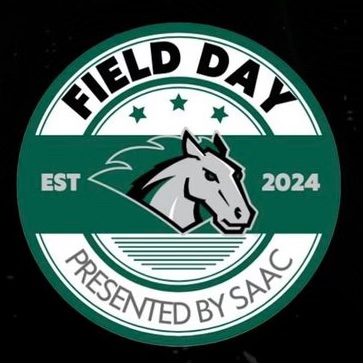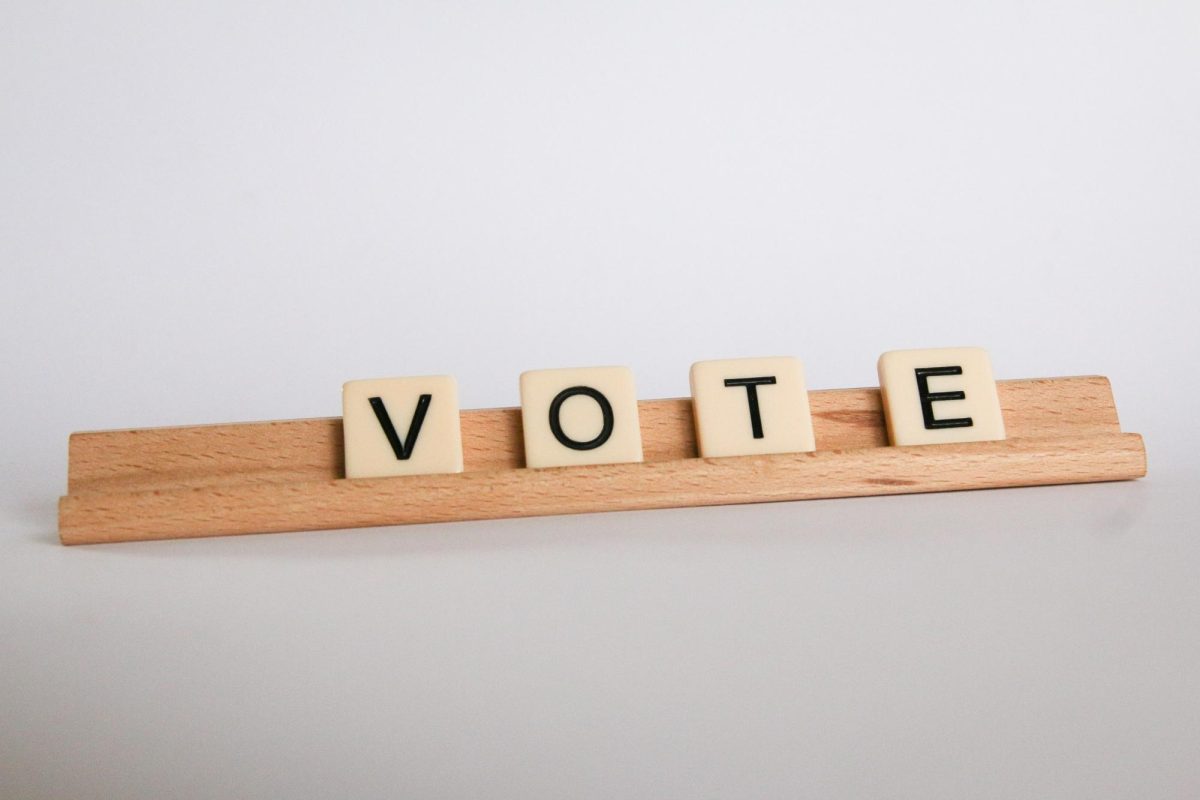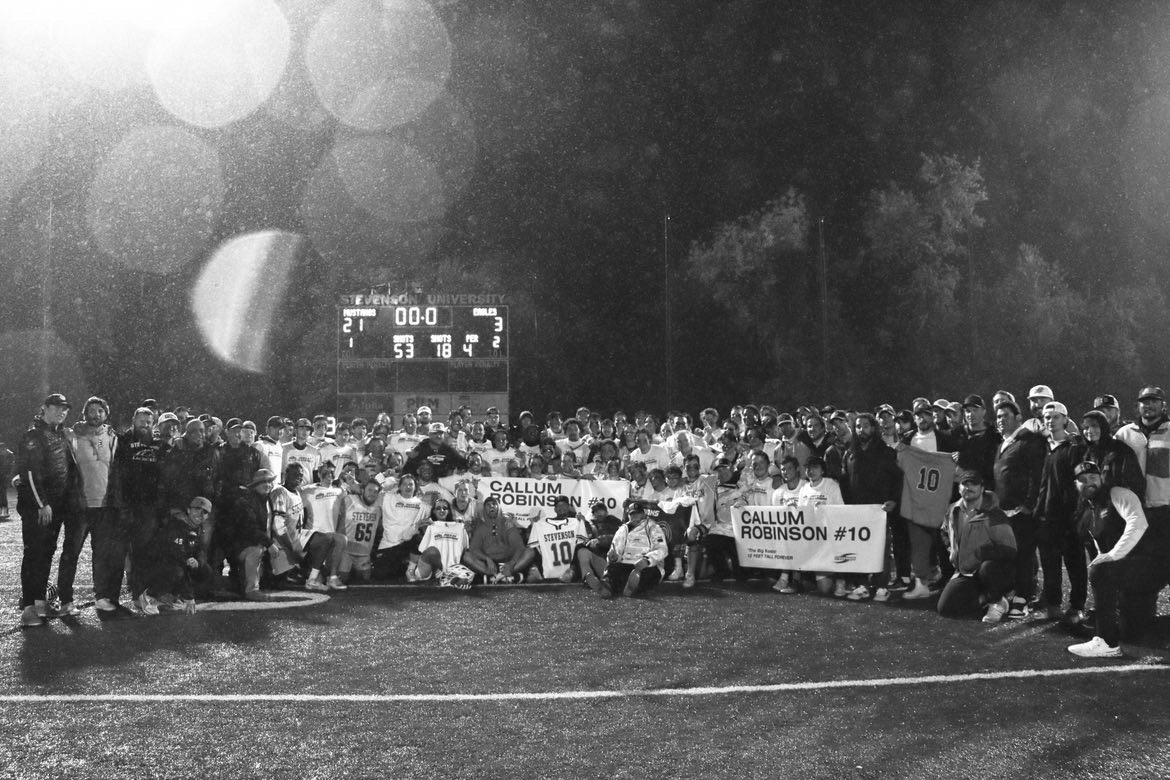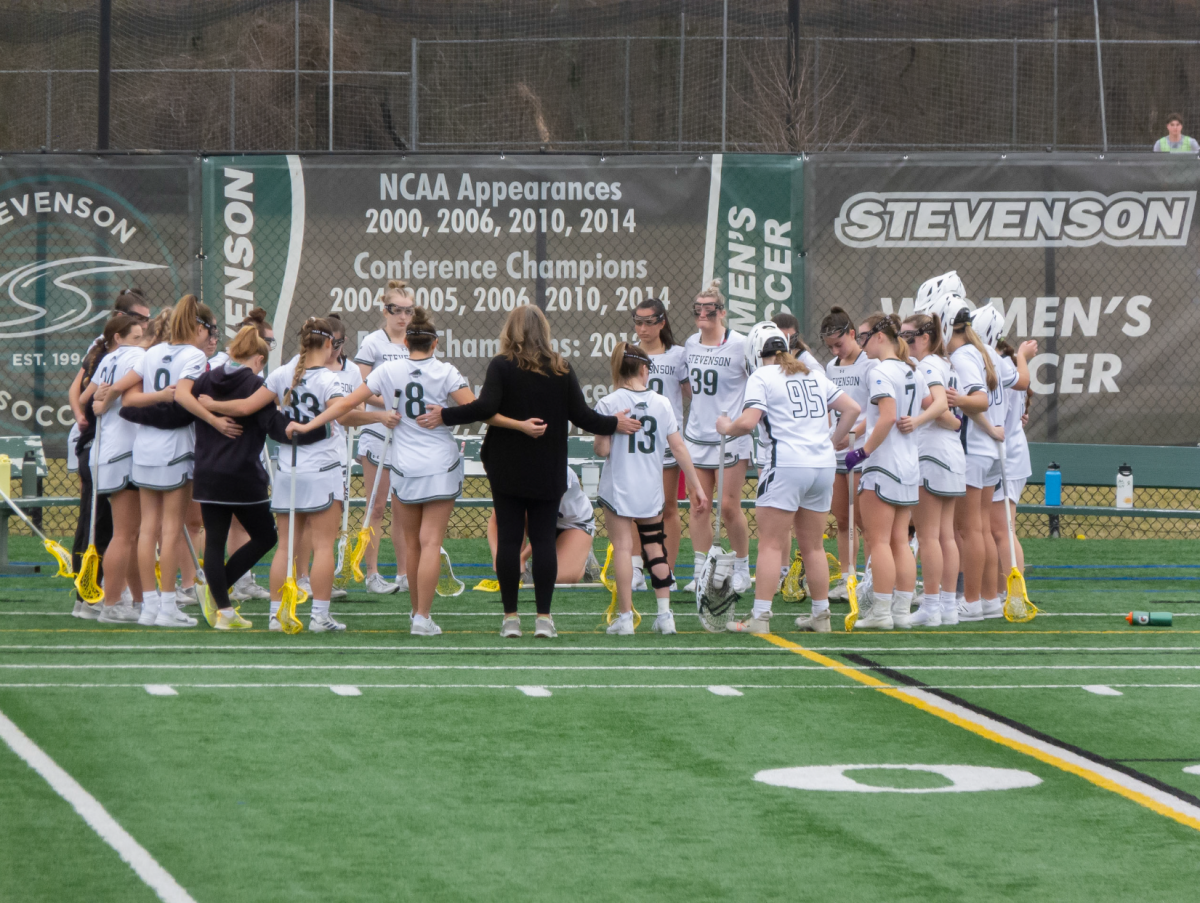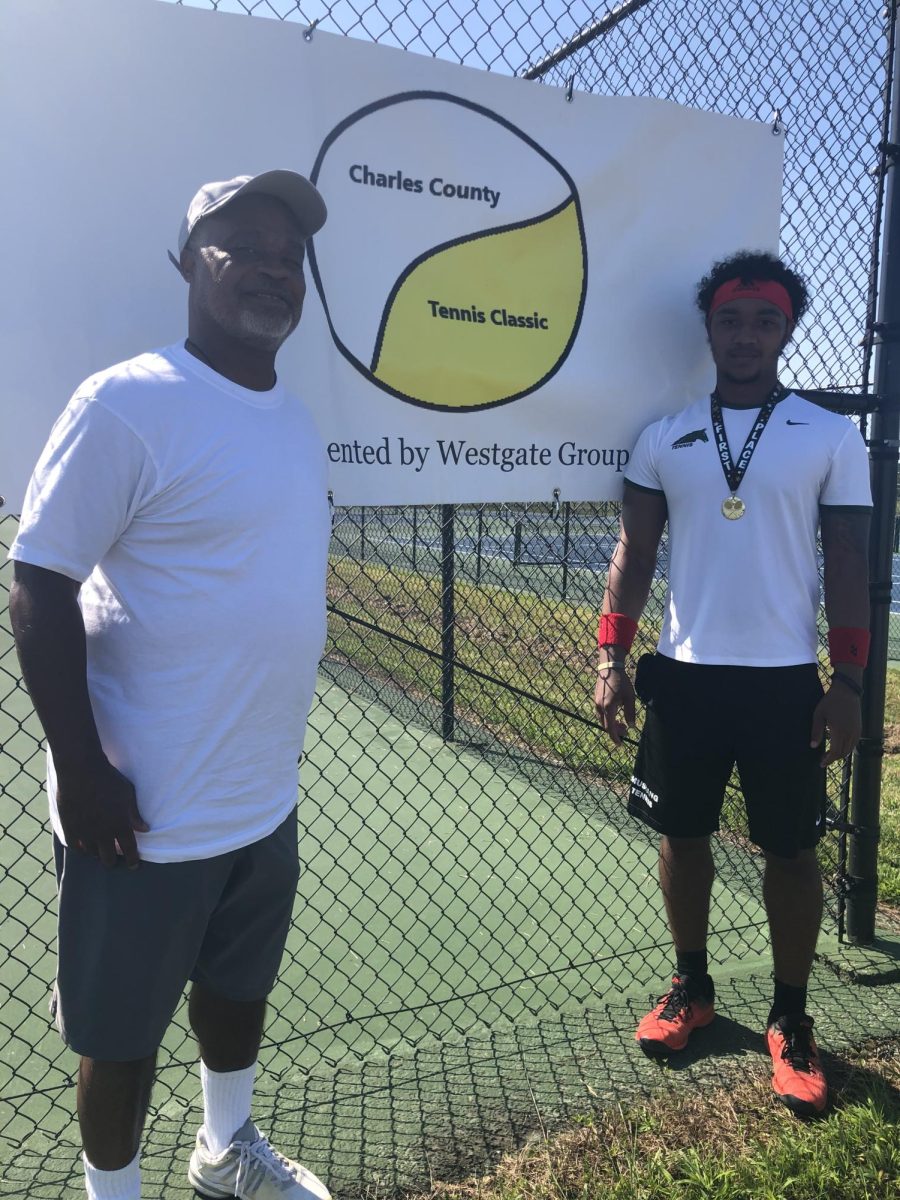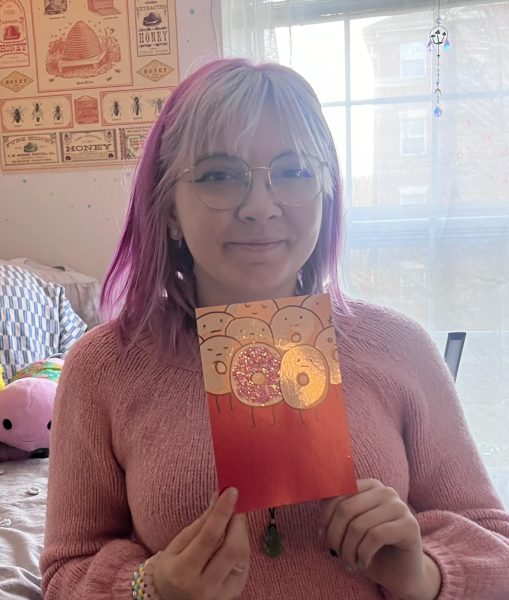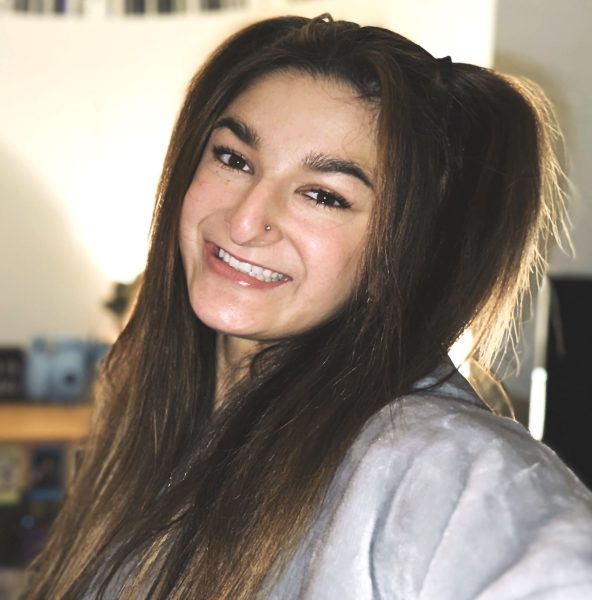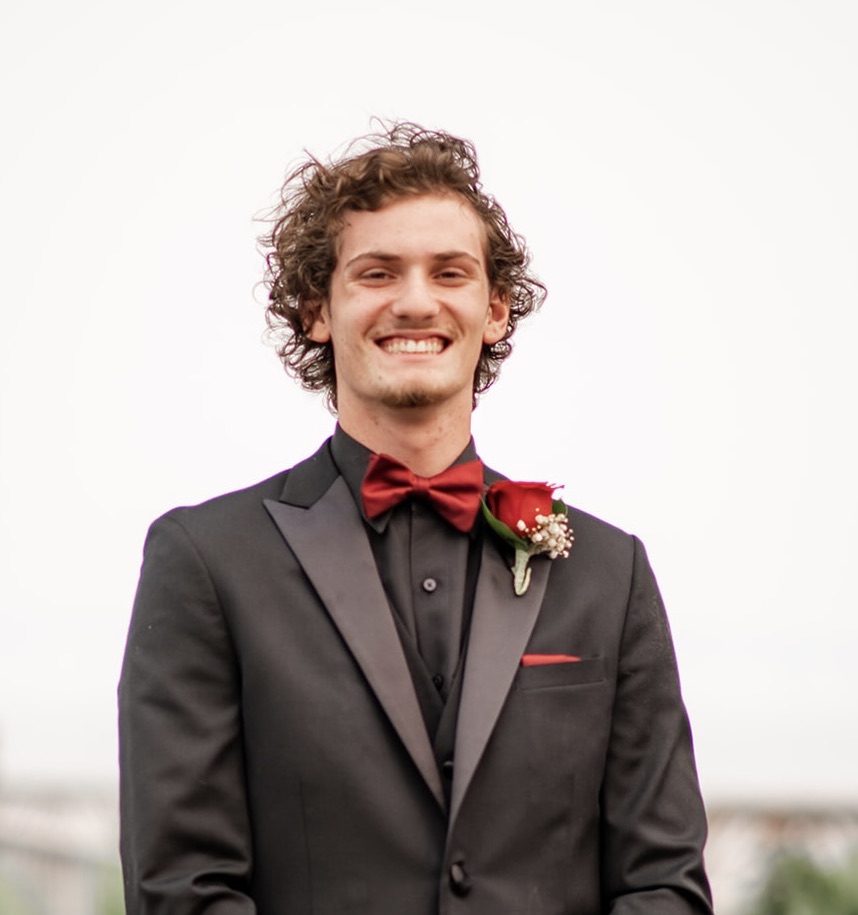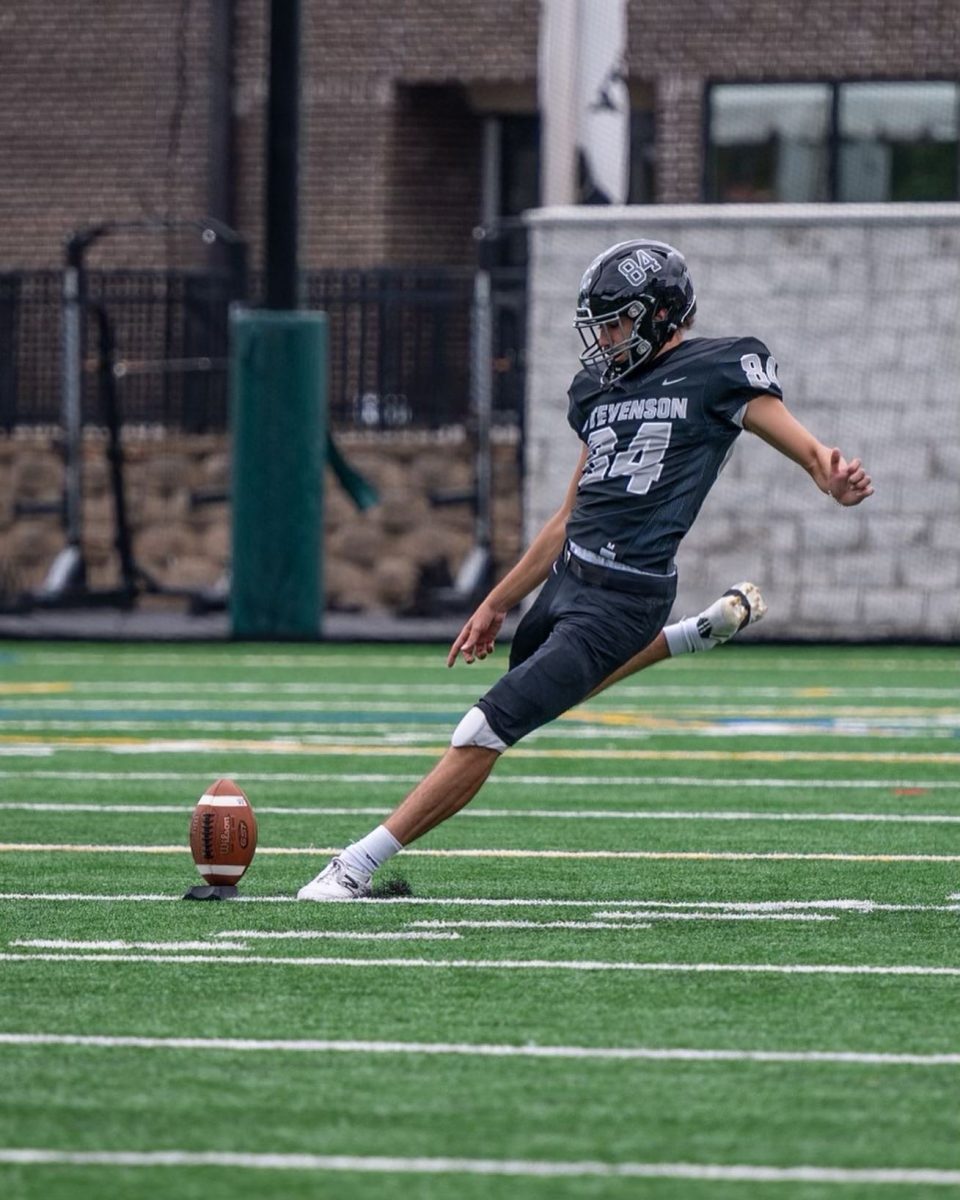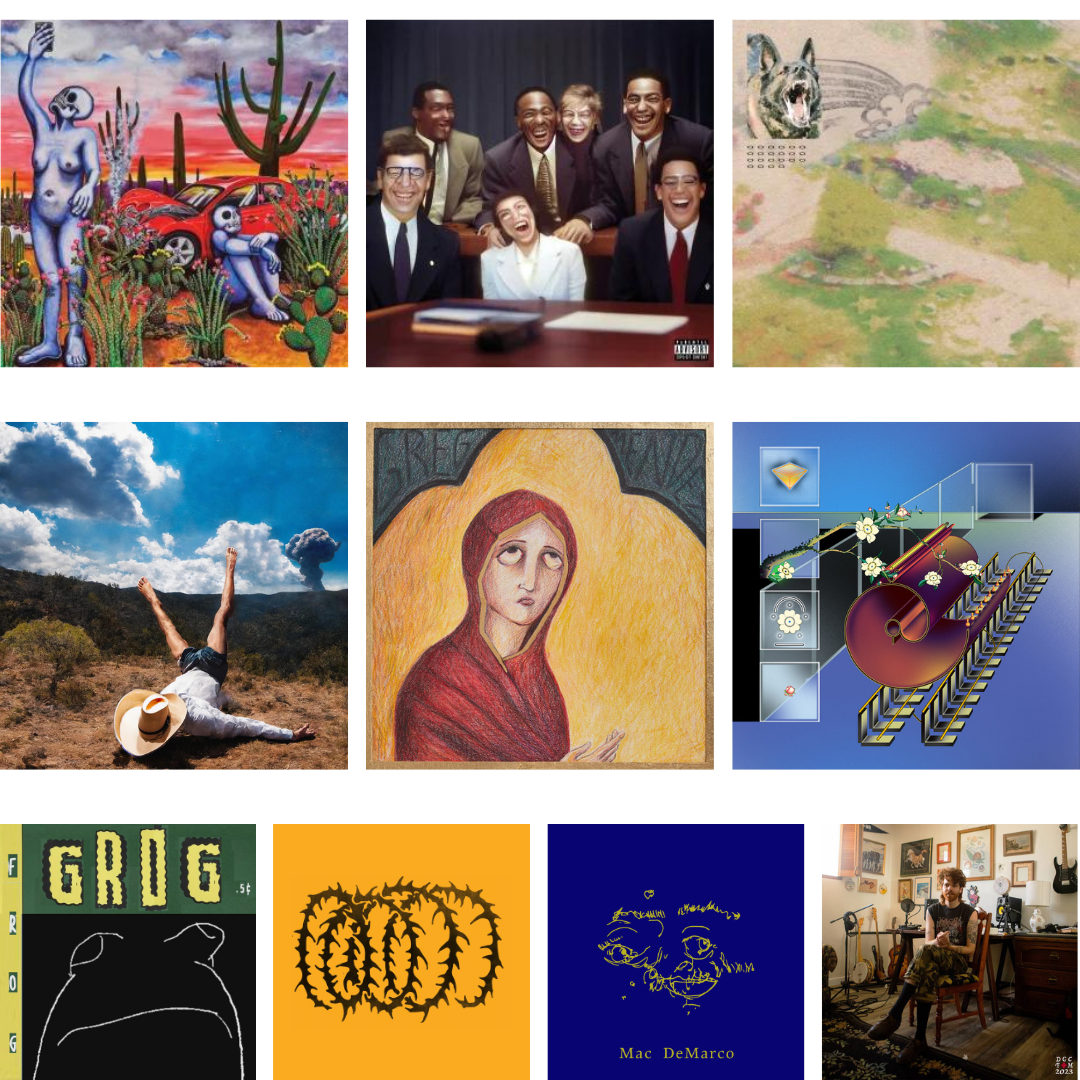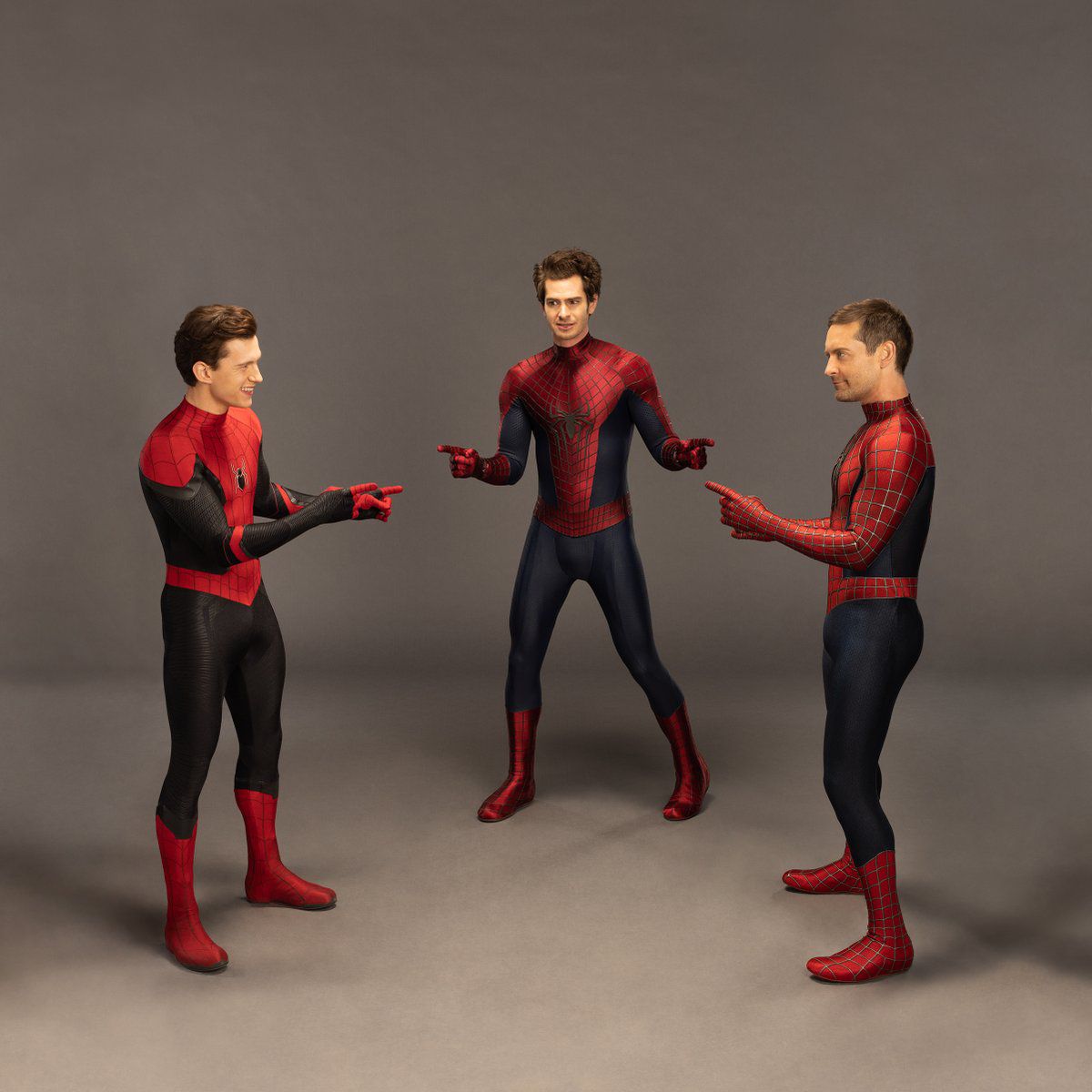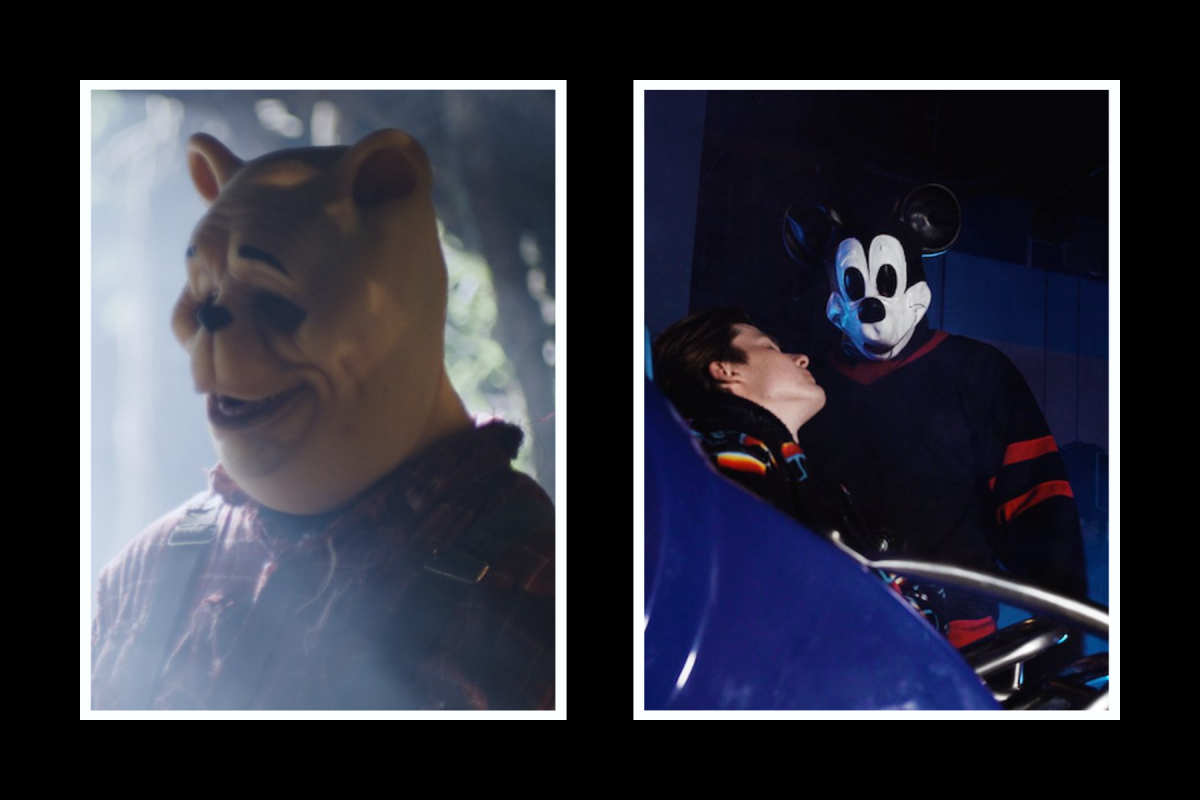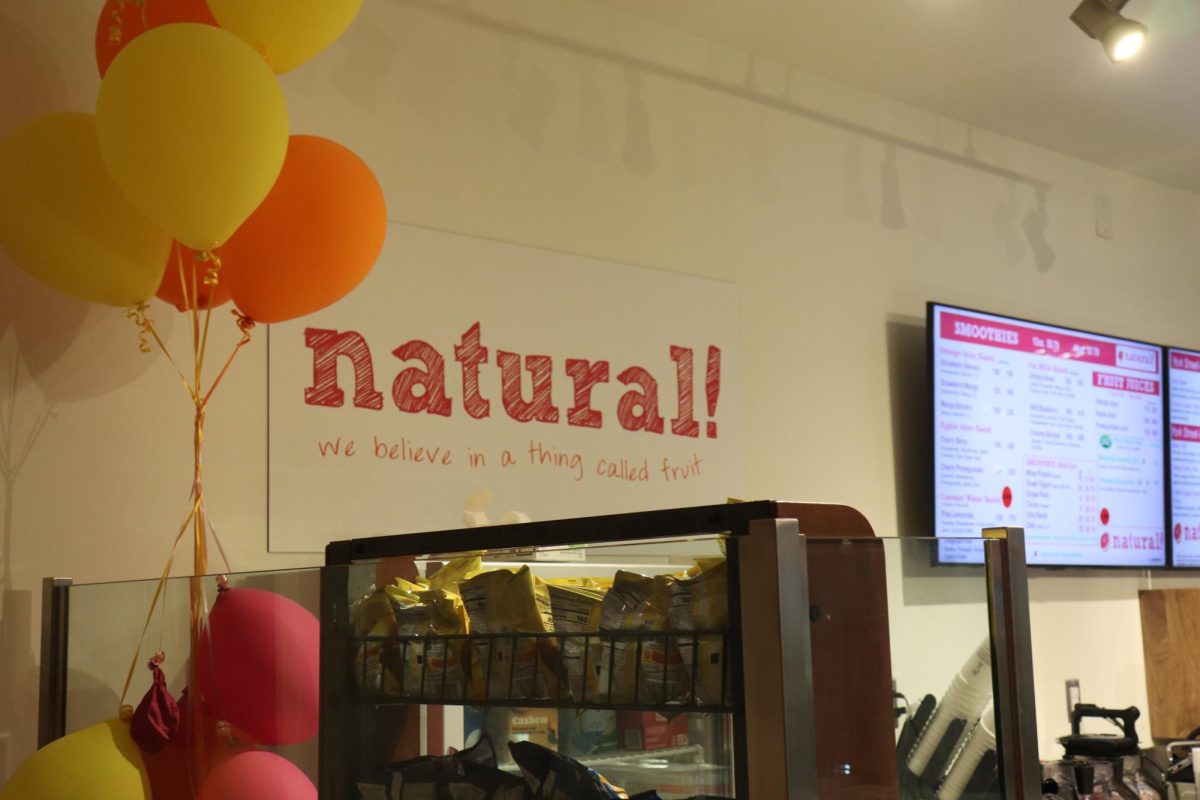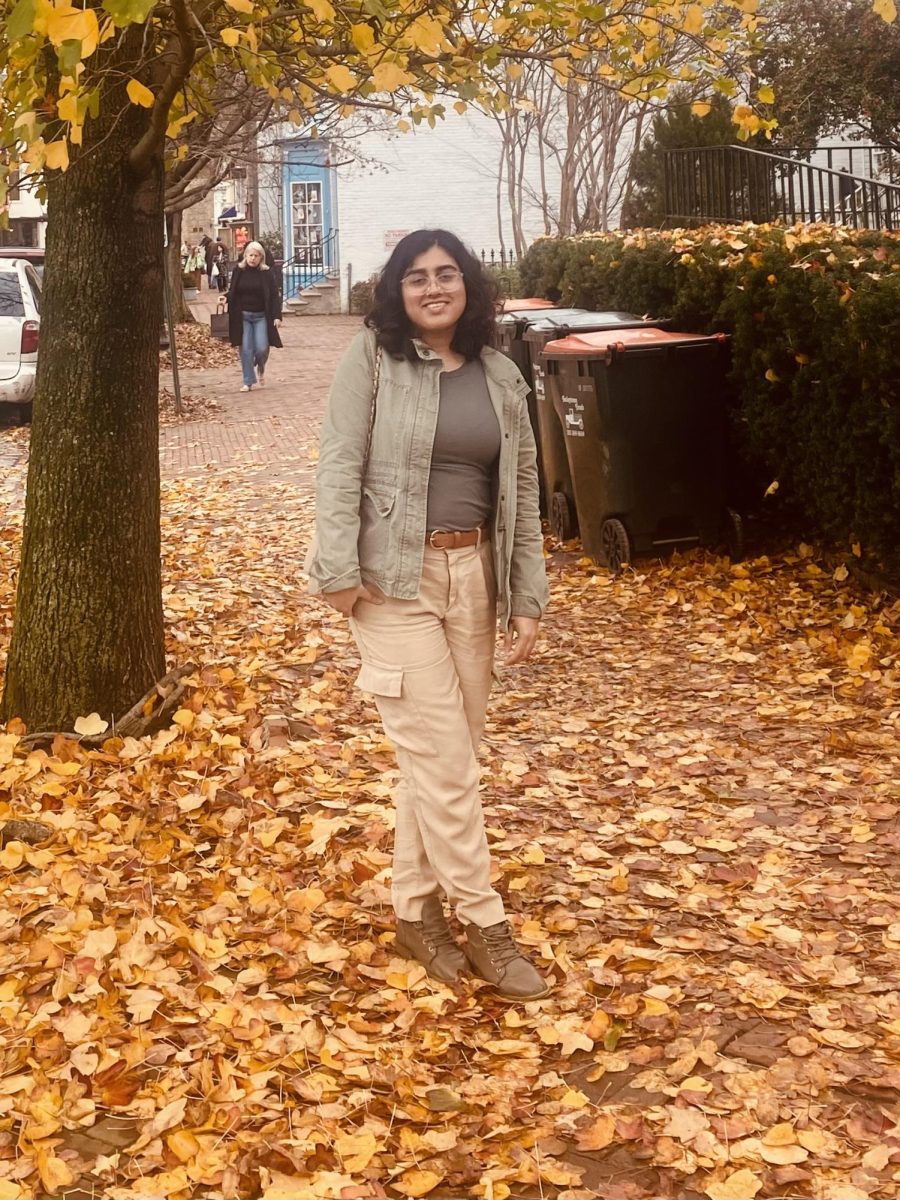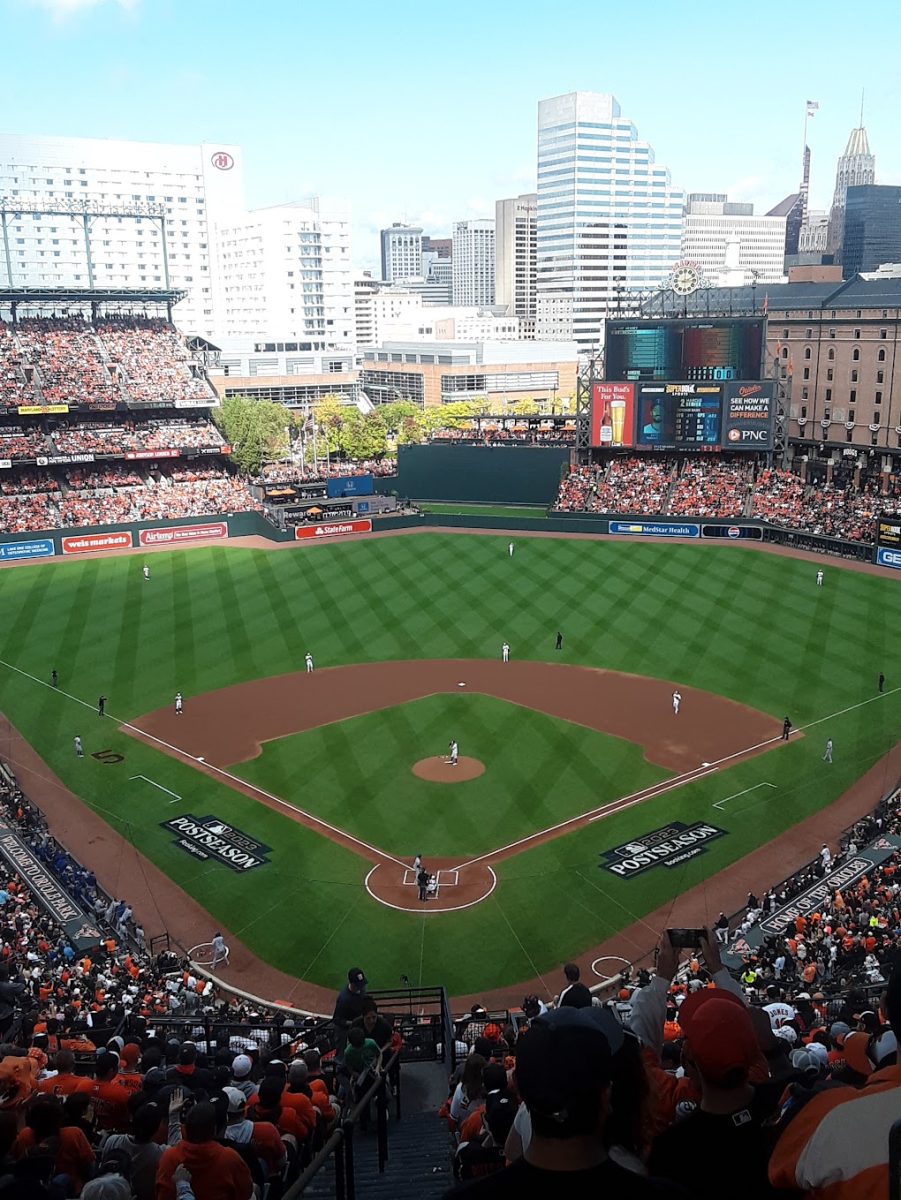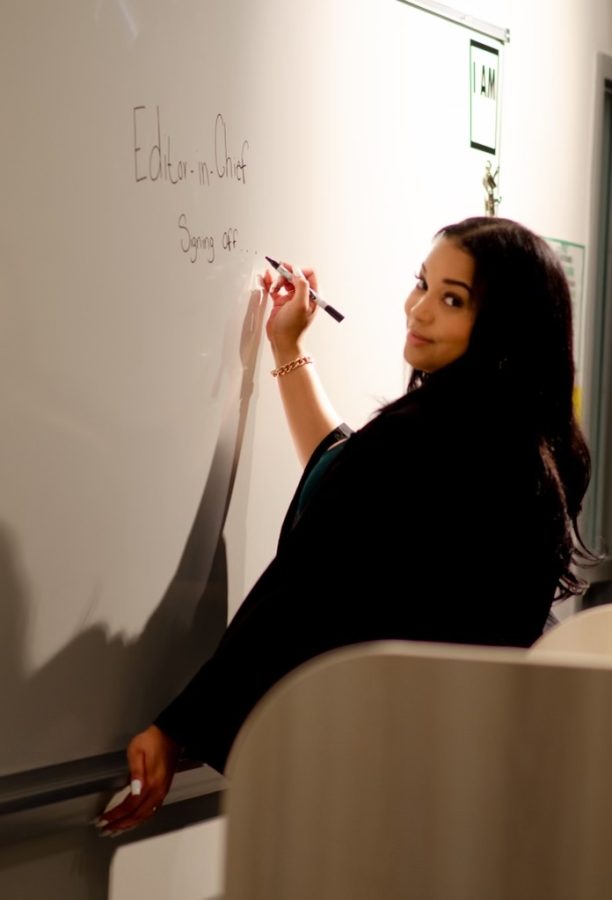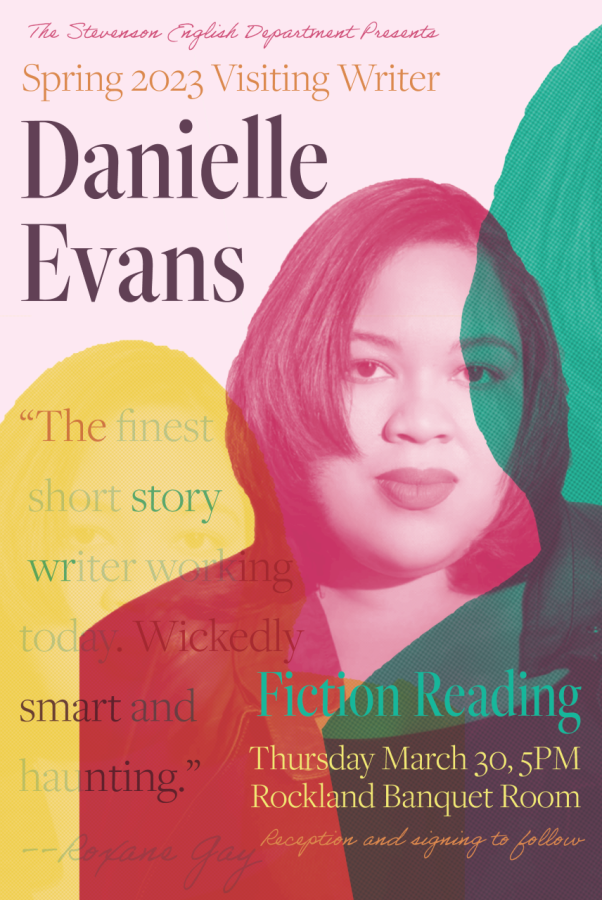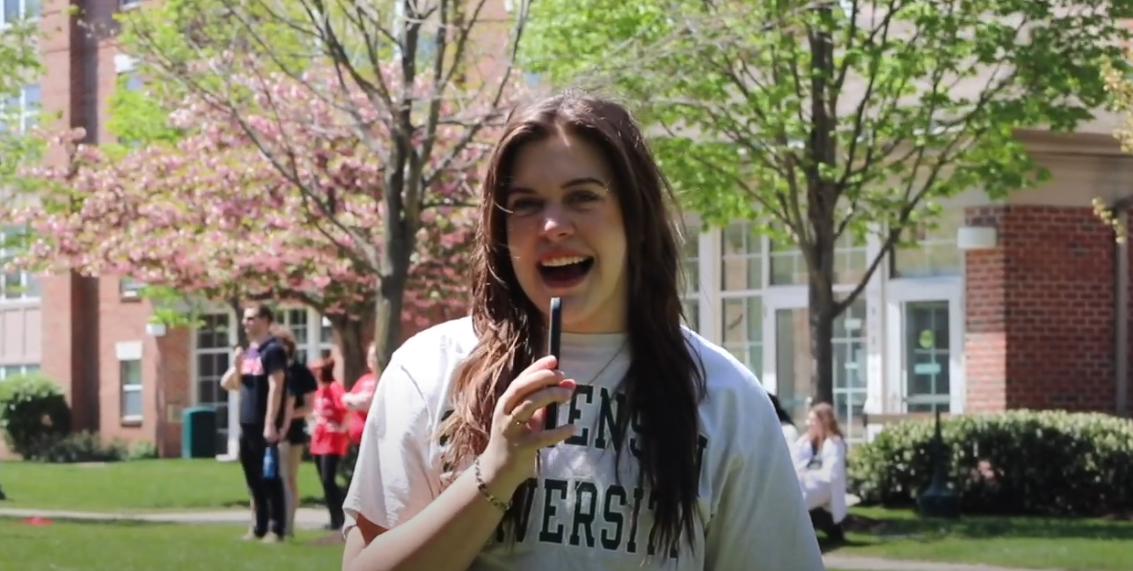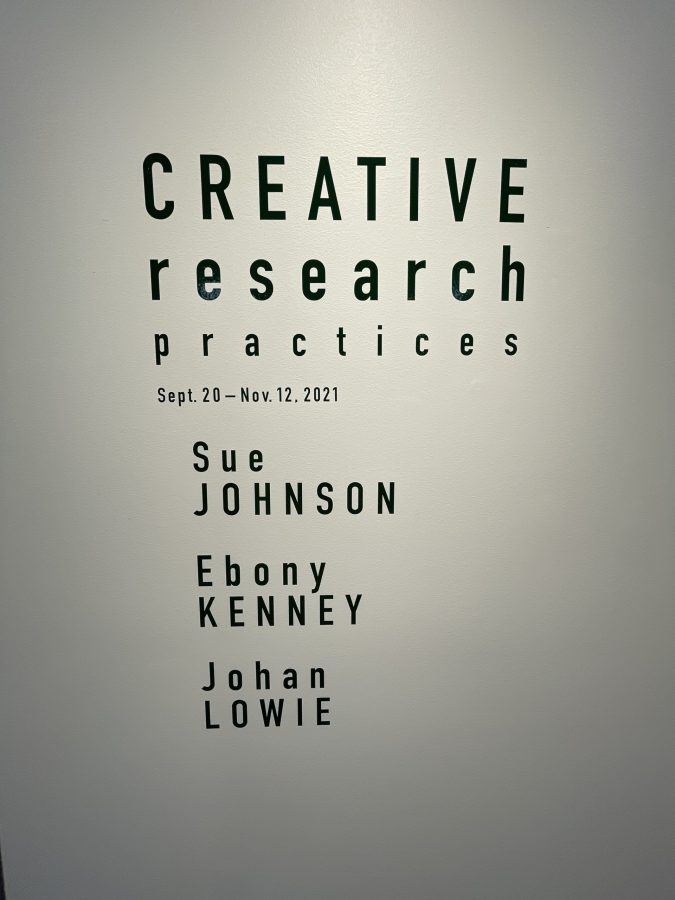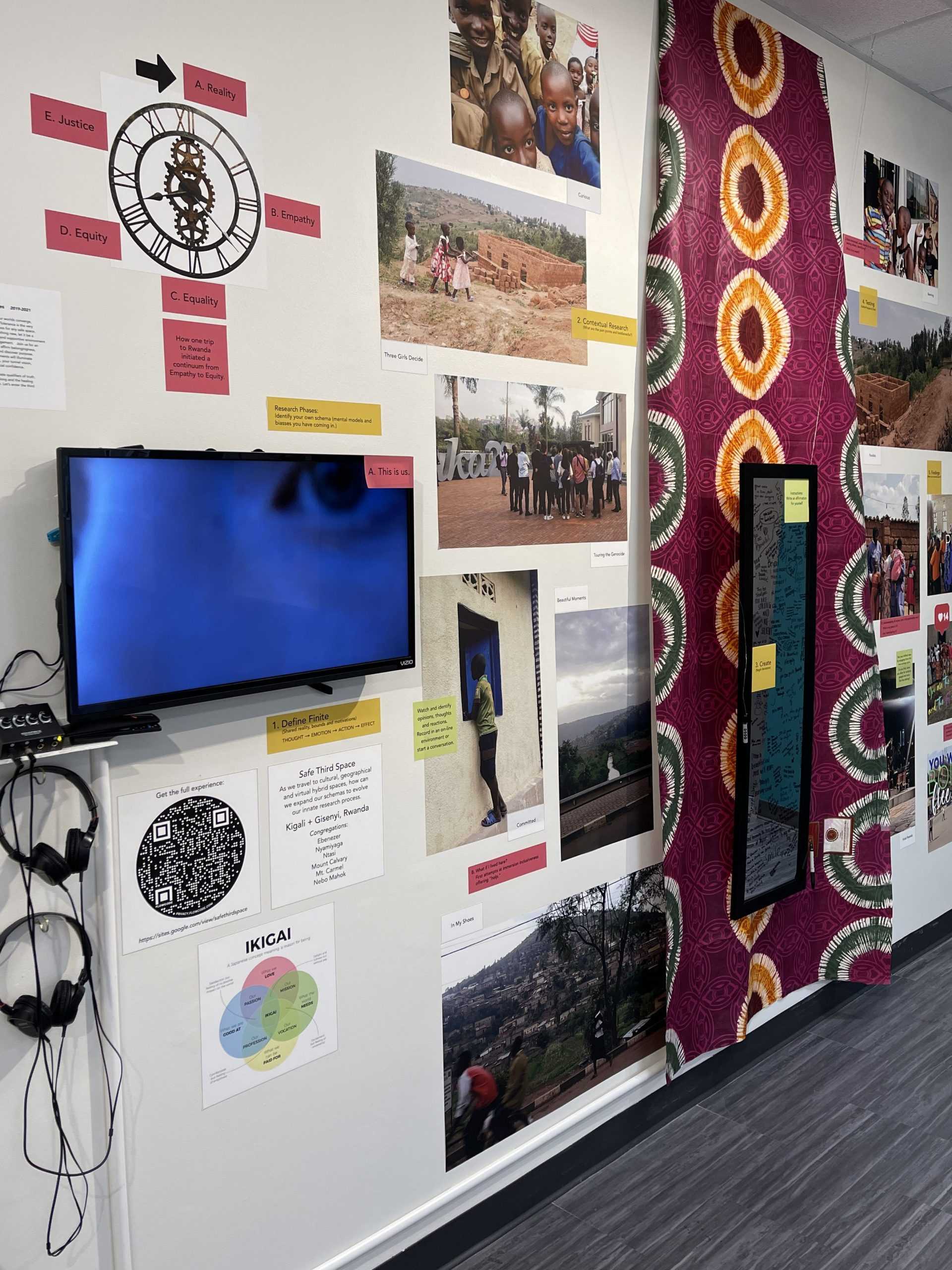By: Jasmine Mendez-Paredes
“The surgeon said, ‘This is it. You are dying. Your heart is only working at 8% and I don’t know if you’re going to make it through the night’… In the meantime, I made a lot of new drawings,” said Johan Lowie when describing the experience that resulted in his painting series, Aftermath.
Lowie is one of three individuals who recently showcased their work in Stevenson’s Creative Research Practices, an art exhibition currently on display on the second floor of the Kevin Manning Academic Center. The exhibition also includes artist Ebony Kenney’s installation, “Safe Third Spaces,” where she incorporated a user experience framework and field photography research from her trip to Rwanda. Sue Johnson’s “Hall of Portraits from The History of Machines,” utilized Mid-20th Century advertisements and objects to create mixed-media paintings on the portrayal of female identity during the era.
With the help of Professor Lori Rubeling and a team of student assistants who curated the installations, the artists transformed the hallways of the KMAC into an expansion where viewers may connect with their research and personal experiences.
“Aftermath”
In 2015, Lowie was admitted to the Johns Hopkins Hospital and stayed until he could receive a heart transplant. “So, I drew constantly in the hospital. I set up my studio there and… waited for my heart,” said Lowie.
As he spoke, Lowie pointed to his framed paintings. He said they were illustrations of his painful experience in the hospital. “I was attached to a lot of machinery waiting for a new heart… These pieces are made with ink based on the machinery.”
Pulling up a picture from his phone of the medical equipment, Lowie said, “I never saw it as a negative thing… I was constantly aware that this keeps me alive… without it, I’d be dead.” Some of the abstract paintings illustrated dangling cables representing Lowie’s attachment to the medical machinery. What’s interesting is the black ink interrupting the cables.
Besides the medical equipment, Lowie also incorporated sketches of his bed, figures of doctors that arrive in the night, and the hospital window. “There [was] a window with some green [in the hospital], he said. There’s not a lot of greenery [there]. You really miss nature and animals.” The painting of the window integrated the slightest bit of green for about 1/6 of the canvas page.
The largest framed one, on the other hand, depicted colorful people coinciding with tall black figures. Lowie’s choice in color, figure-ground, and proportion allowed the viewer to ask many questions like: How may the colorful figures correspond to each black figures? Could the colorful figures represent life; moreover, are the figures meant to contrast life and death?
The painter used Japanese ink, gold leaf, and bamboo brushes as the media in his series of paintings. The artist described the creative process of the bamboo brush. “These are brushes that are made completely out of bamboo; there’s no hair involved in it. There’s a town in Japan where that’s the only thing they do, they make these brushes and with hot chisels, they replicate hair.”
As a painter, using these bamboo brushes became second-hand nature for Lowie. His choice in color, stroke direction, and abstraction demonstrates how his brush is merely an extension of himself. He summed up his style as “direct” and based on his “inner feelings.”
Coming from an artistic family, Lowie mentioned how art was something he innately enjoyed. “My father was a sculptor, so I’ve always been involved in art… It was kind of natural to me,” Lowie continued, “[My] teachers would come home with my drawings from school to show my parents… [and art became something] I always loved.”
When asked about what he’d like the audience to take away after viewing his art, Lowie responded, “It’s important when you’re in bad situations or if you feel like it’s important to keep on doing what you love… and always see a positive side to it.” Lowie added, “You have a choice in life… to see [the circumstance] in a positive way or you can see it negatively. The outcome of your life has a lot to do with that choice you make.”
“Safe Third Spaces”
Kenney’s work, “Safe Third Spaces,” allowed each viewer to go through an individual exploration to awaken connection and discover purpose. After a medical mission trip to Rwanda, Kenney was inspired to create an exhibit that affirmed belongingness and the healing power of acceptance.
She described how her trip to Rwanda led to a realization. “[In the] medical mission… we were treating ringworms and feet that were cracked… but I reached a point where I said, ‘I am not here to help these people as much as I am here to experience an awakening.’” Kenney added, “[The people from Rwanda are] allowing me to see myself reflected through them. I am here to see them and I am here to see the reflection back to myself.”
The physical exhibit weaved in a step-by-step research methodology process with photographs of the environment and children she captured from her trip. Kenney used techniques such as slow shutter speed, large/narrow depth of field, and angles for the audience to step into her perspective. The artist incorporated visual textures such as African fabric draped in the background.
Kenney’s installation also incorporated a user experience framework activating the audience’s senses. She described the reason behind the interactivity in her exhibit, “It’s the way my brain works. I have my overall visual but then I want to do a deep dive so I hope it will serve as an invitation for people to deep dive.”
Examples of user experience include Kenney’s audio-visual poetry displayed on a television screen, a mirror that allows the viewer to write their affirmations, and a QR code that leads to a virtual experience of the exhibit.
Lastly, the artist mentioned the importance of creating a safe space, “Sometimes as humans we go from trying to prove we belong in spaces… There is a point in which… you realize how off track it is to be proving vs [discovering your] purpose, so I’m hoping we create spaces that allow people to move quickly into purpose.”
“Hall of Portraits from The History of Machines”
Sue Johnson took the audience backward in time to the late 19th Century with her installation Hall of Portraits from The History of Machines. The installation included mixed media collages of women and objects combined as one.
Previously, Johnson worked with antique objects for her research. Johnson said, “I did a large project sort of like a walk-in space almost like you’re in a dollhouse filled with these objects. But it was all illusory.”
This moment led to a realization that would pivot her artistic direction. “When I saw that [project] first installed, I had this really deep feeling [and asked myself,] ‘who’s space is this?’… [Then] I realized I was interested in working with the images of the woman that would’ve populated the space.”
Johnson described her research takeaways. “There were several key inventions: The sewing machine, electric light, and cars came in right around the turn of the century, the bicycle a motive for transportation. All of a sudden movement, machine and the body becoming one.”
The artist comes with experience in both painting and printmaking. She added I’ve done a lot of paintings that are called Trompe-l’oeil. It almost feels like you can reach out and touch them.” However, Johnson decided to use a different approach with her exhibit. She described her process in using mixed media, “I scanned the advertisement… and photographed it. Sometimes I own the objects and rescale them. [Then I] have them printed commercially on canvas and I’m painting around.”

She pointed to one of the collages and said, “What I’m doing on the surface is technically mono printing. The background is black and in the translucent layer I am printing bounty paper towel.”

